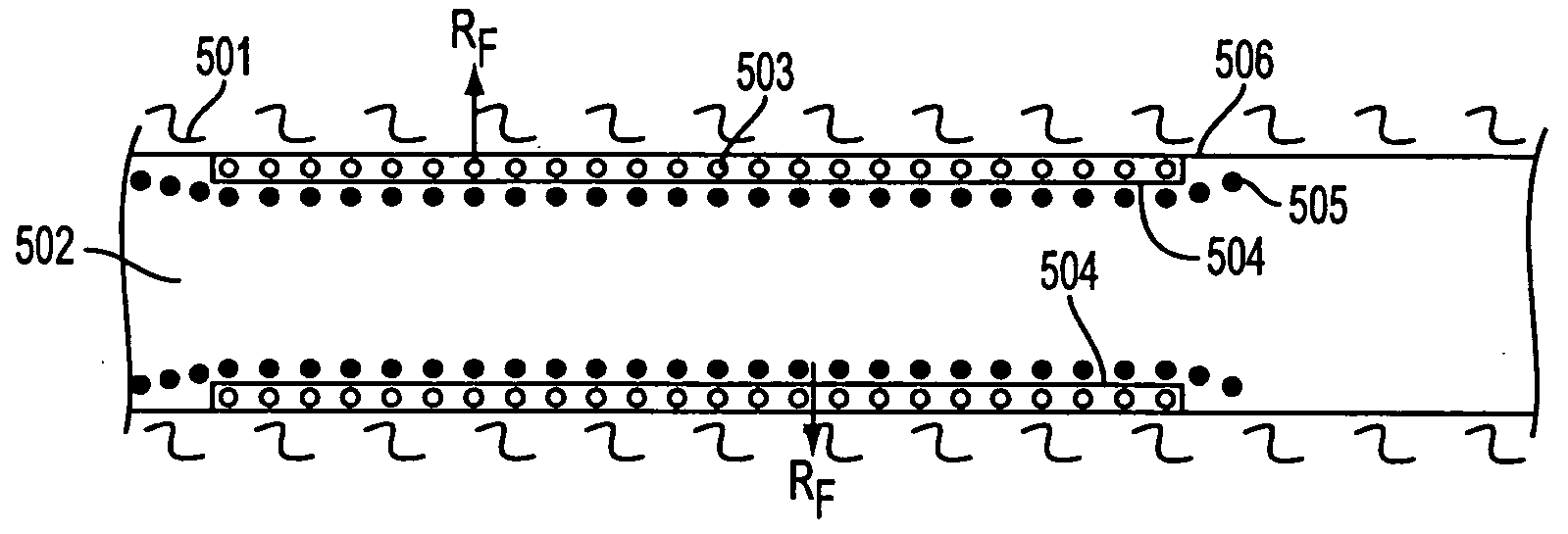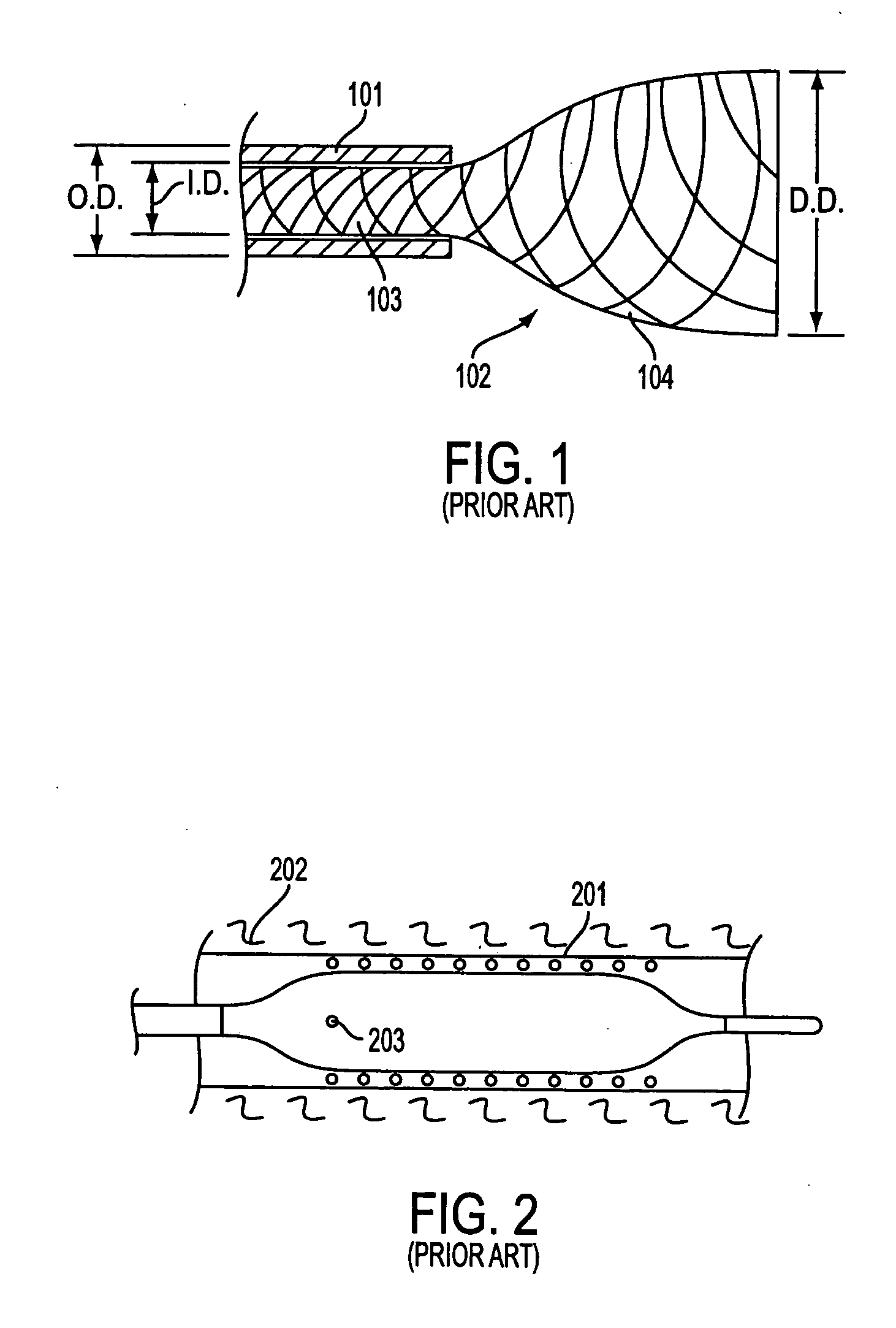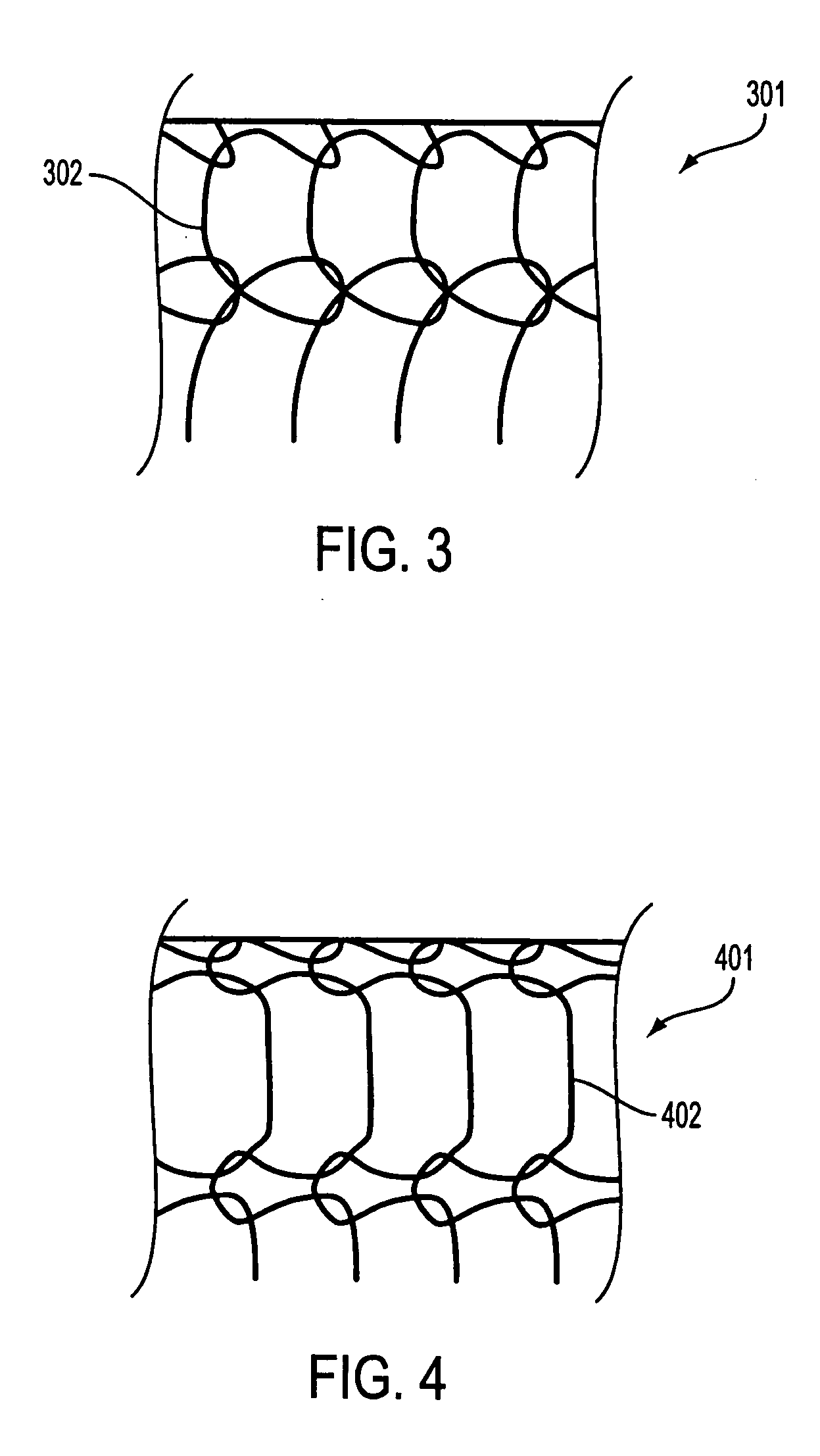Composite stent with inner and outer stent elements and method of using the same
a technology of stent and inner and outer stent, which is applied in the field of body implantable treatment devices, can solve the problems of inability to swallow liquids, progressive dysphagia, and difficulty in swallowing
- Summary
- Abstract
- Description
- Claims
- Application Information
AI Technical Summary
Benefits of technology
Problems solved by technology
Method used
Image
Examples
Embodiment Construction
[0040] Referring to FIG. 3, according to an embodiment of the invention, a composite stent 301 includes an outer bioabsorbable mesh or similar stent element 302 affixed to a fully covered inner self-expanding metal stent (SEMS). Suitable outer bioabsorbable or biodegradable stents are typically made from a bioabsorbable polymer. Polymer structures typically have a higher potential to creep (i.e., experience permanent deformation and fail to return to an original shape and / or size when released) if held in a constrained condition while in the delivery system. The potential for creep in the outer element may increase with temperature elevation such as in sterilization. The fully covered SEMS will self-expand to SEMS as shown in FIG. 4 so that the combined structure 401 (including bioabsorbable mesh 402) overcomes any loss in recovered diameter. While some bioabsorbable shape memory polymers may minimize creep, the instant composite stent design simplifies the bioabsorbable material de...
PUM
 Login to View More
Login to View More Abstract
Description
Claims
Application Information
 Login to View More
Login to View More - R&D
- Intellectual Property
- Life Sciences
- Materials
- Tech Scout
- Unparalleled Data Quality
- Higher Quality Content
- 60% Fewer Hallucinations
Browse by: Latest US Patents, China's latest patents, Technical Efficacy Thesaurus, Application Domain, Technology Topic, Popular Technical Reports.
© 2025 PatSnap. All rights reserved.Legal|Privacy policy|Modern Slavery Act Transparency Statement|Sitemap|About US| Contact US: help@patsnap.com



